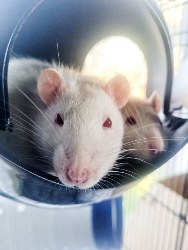Kiwi researchers in breakthrough treatment for tuberculosis
Kiwi researchers in breakthrough treatment for deadly drug-resistant tuberculosis
October 23, 2019 – A team of medical researchers based at the University of Auckland (UoA), who have been working for nearly 15 years in partnership with the international non-profit TB Alliance to develop new treatments for tuberculosis (TB), has been part of a major breakthrough.
In August 2019, an innovative candidate drug emerging from this TB Alliance programme, pretomanid, was approved by the US Food & Drug Administration (FDA) as part of a novel treatment (the BPaL regimen) for deadly, highly drug-resistant forms of tuberculosis (TB).1
Current treatment efforts for extensively drug-resistant (XDR) TB have poor outcomes, with the World Health Organization (WHO) estimating that treatment is successful for approximately 34 percent of patients. Treatment of highly drug-resistant TB has historically been complex and lengthy, with patients taking a combination of as many as eight antibiotics, some involving daily injections, for 18 months or longer.
BPaL is a three-drug (pretomanid, bedaquiline, linezolid) six-month, all oral drug treatment for people with XDR-TB as well as failed or treatment-intolerant multidrug-resistant (MDR) TB.1,2 In the pivotal Nix-TB clinical trial of the BPaL regimen, approximately nine out of ten patients were treated successfully.2
Pretomanid is only the third new anti-TB drug approved for use by the FDA in more than 40 years. It is also the first to be developed and registered by a non-profit organisation, in a new model of drug development driven by unmet global need rather than commercial goals.3,4
“FDA approval of this treatment
represents further hope for the people suffering from these
highly drug-resistant forms of the world’s deadliest
infectious disease,” says Mel Spigelman, MD, president and
CEO of TB Alliance. “The associated novel regimen will
hopefully provide a shorter, more easily manageable and
highly efficacious treatment for those in need.”
Pretomanid is expected to be available in the US by the end of 2019. A Marketing Authorization Application is also under review by the European Medicines Agency.
In the course of its partnership with the TB Alliance, the University of Auckland-based team has also advanced two potential bedaquiline substitutes (TBAJ-587 and TBAJ-876), which may offer additional improvements in efficacy and safety and are progressing toward Phase 1 clinical trials.
“These new drugs, together with a new generation oxazolidinone, have the potential to transform treatment even further than the new BPaL regimen by eliminating the disease in 8-10 weeks,” says University of Auckland researcher and medicinal chemist, Distinguished Professor Bill Denny who has led the research in NZ on behalf of the TB Alliance.
Despite the promise of research, a significant funding gap poses an obstacle for developing new treatments like the BPaL regimen, with an estimated $1.3 billion global shortfall in research and development funding for new TB drugs, diagnostics and vaccines that can end the epidemic.
TB is a global disease that can be spread by coughing or sneezing. It is the leading infectious cause of death worldwide. In 2017, 10 million people fell ill from active TB and 1.6 million died. There are more than half a million cases of multi-drug resistant (MDR)-TB annually and the rate is increasing globally.
In New Zealand, ESR figures from 2008 to 2017 show an average of about 300 cases of TB a year, with most who have the disease being born overseas. However, while the rate of infection for those of European ethnicity is 0.5 per 100,000 population, the rate among Pasifika is 25 times higher (12.9 per 100,000 population) and Māori is eight times higher (4.1 per 100,000 population). In addition, there are three to five cases of MDR-TB each year in NZ.
Antimicrobial resistance is a priority for the Government, with NZ having one of the highest human usages of antimicrobials of any developing country, putting us at risk of running out of effective antimicrobials to treat many infections. TB is an imminent threat to this country and its Pacific neighbours as the disease thrives in poorer communities and in Asia, where NZ derives many of its increasing number of migrants and tourists.
Professor Denny says, “Although we see very few cases of MDR-TB in New Zealand, the current treatment costs can run to $500,000 per patient and the survival rates are poor.
“The new drug regimen, using pretomanid, means shorter treatment, less resistance and a better survival rate for people with XDR-TB and complicated forms of MDR-TB.”
“The University of Auckland team has built up a great skill-base working with researchers across New Zealand.”
Other NZ universities have also made significant contributions to this drug development programme through the nationwide collaborations under a tuberculosis flagship research programme of the Maurice Wilkins Centre for Molecular Biodiscovery.
Professor Greg Cook of Otago University says, “One drug is not enough to make up for the 40-year lag in TB drug development. The development of new inhibitors targeting the same pathway as bedaquiline and pretomanid has been a major focus of the Maurice Wilkins Centre.”
The network of TB researchers across NZ, working with UoA’s commercialisation company Auckland UniServices, are hoping to create a NZ-wide TB Research Consortium to join with TB Alliance and other global partners to develop future TB drugs.
UniServices chief executive Dr Andy Shenk says, “This is an exciting breakthrough and is an opportunity for New Zealand to take a science leadership role. By creating a centre of excellence, we will be able to attract and retain valuable staff and secure further contract research, clinical trials and ultimately revenue for New Zealand. However, the most important outcome is to be part of saving lives, not just in NZ, but in many countries worldwide.”
References:
Pretomanid and BPaL. Full Prescribing
Information. August 2019.
2. TB Alliance. Pretomanid and BPaL Regimen for Treatment of Highly Resistant Tuberculosis. Oral presentation at: Antimicrobial Drugs Advisory Committee; June 6, 2019; Silver Spring, MD.
3. Fox W. Studies on the treatment of tuberculosis undertaken by the British Medical Research Council Tuberculosis Units. Int J Tuberc Lung Dis. 1999;3(10):S231-S279.
4. U.S. Food and Drug Administration. Drug Approvals and Databases. Available at: https://www.fda.gov/drugs/development-approval-process-drugs/drug-approvals-and-databases
ends


 Business Canterbury: Urges Council To Cut Costs, Not Ambition For City
Business Canterbury: Urges Council To Cut Costs, Not Ambition For City Wellington Airport: On Track For Net Zero Emissions By 2028
Wellington Airport: On Track For Net Zero Emissions By 2028 Landcare Research: ANZAC Gall Fly Release Promises Natural Solution To Weed Threat
Landcare Research: ANZAC Gall Fly Release Promises Natural Solution To Weed Threat NZ Anti-Vivisection Society: Auckland Rat Lovers Unite!
NZ Anti-Vivisection Society: Auckland Rat Lovers Unite! University of Canterbury: $1.35 Million Grant To Study Lion-like Jumping Spiders
University of Canterbury: $1.35 Million Grant To Study Lion-like Jumping Spiders Federated Farmers: Government Ends War On Farming
Federated Farmers: Government Ends War On Farming



